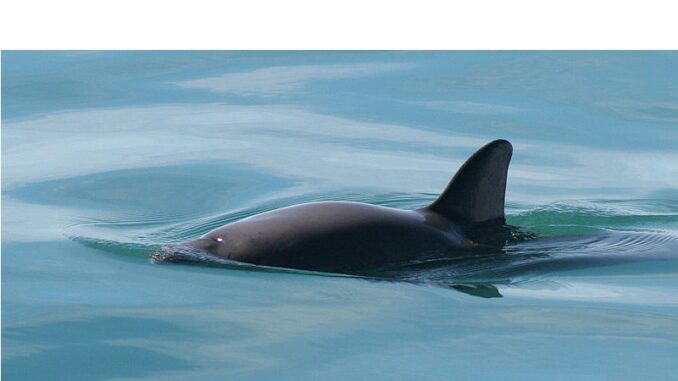
South of Yuma, Arizona, the Colorado River meanders through Mexico’s Sonoran Desert until it reaches the wetlands of the Colorado River Delta. Here, the river flows into the Gulf of California. This northernmost portion of the Mar de Cortés (Sea of Cortés), as the Gulf of California is also known, is the only place on Earth where the world’s smallest living cetaceans live. (Dolphins, porpoises, and whales are all cetaceans.)
Phocoena sinus (common name: vaquita, or California harbor porpoise) is only about the size of a small human. Typical females measure 150 centimeters (4.9 feet) in length, while the average male is slightly smaller at 140 centimeters (4.6 feet). These diminutive mammals are on the International Union for Conservation of Nature (IUCN) Red List as Critically Endangered. With only about ten individuals left in the wild, the vaquita is dangerously close to extinction. There’s both good and bad news about their situation, however.
The good news is that marine researchers have determined that the vaquita have been barely hanging on to existence for thousands of years. While that may not sound good, according to scientists who’ve studied these creatures it means that all the genetic baggage has been long bred out of them, so inbreeding does not pose any risk. Also, the same researchers point out that several other once-threatened species with even fewer remaining members have made impressive comebacks and are no longer in danger.
The bad news is that local fishermen have gone back to using gillnets – illegally – which can trap and drown the vaquita. The Mexican government had been paying fishermen not to fish this area, but that program is no longer in effect, for whatever reason. Use of the gillnets is not only illegal, but the greatest threat to the vaquita. Unfortunately, the government is not enforcing the law, for reasons unknown. Hopefully, these beautiful and intelligent porpoises can breed faster than accidents and old age can reduce their population.
Scientific Classification
Kingdom: Animalia
Phylum: Chordata
Class: Mammalia
Order: Artiodactyla
Infraorder: Cetacea
Family: Phocoenidae
Genus: Phocoena
Species: P. sinus
Binomial name: Phocoena sinus
(Norris & McFarland, 1958)
